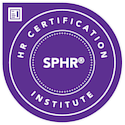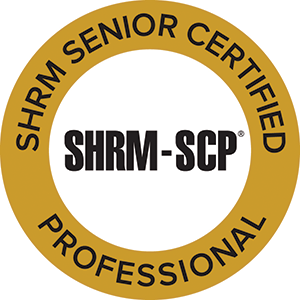One of the things that helps me in my coaching work is that I have experience working on both sides of the talent equation. I’ve worked in recruiting for large organizations and have consulted with business leaders about effective hiring strategies and processes during my entire career. I’ve also worked with individuals at all career levels to help them create a results-oriented job search plan and powerful personal marketing tools.
What I’ve noticed along the way is that there are several things that hiring managers and job seekers have in common. And when these things are not addressed early on, they can have a negative impact on bringing together the right person and the right job at the right time. I’ll be talking about these commonalities over the next couple of months and making suggestions on how you – as a hiring manager or as a job seeker – can avoid them.
The rush to fill a job
When someone leaves, especially when they’ve been in their role for a while, it creates a gap that the manager is understandably anxious to fill. The work needs to get done and remaining employees are already stretched and/or don’t have the appropriate skills to fill in. So, typically the first order of business is to dig out the old job description and get the opening posted as soon as possible.
But wait a minute. Jobs shift over time based on the needs of the team and organization, and often based on the person filling the role. Is what you needed when the job description was created what you need now and into the future to support company goals?
Before you rush to post, take the time to review the job description and conduct a needs assessment before you start the recruitment process. It will help ensure that you find the right talent for your needs.
The rush to find a job
It’s a similar situation for job seekers. Although it’s a best practice to keep your resume up to date, for many people it’s a last-minute scramble when the pressure is on to find a new job. So, they tack their latest job experience onto their resume and launch it into job seeker space hoping to attract something, anything. In today’s job market this is short-sighted and often has disappointing results.
Before you start your job search it’s important to gain clarity around what you want to do next, where you want to do it, and what that looks like, i.e., your work environment. I call this creating your Career Vision and it’s a critical first step for a successful job search.
If you need help creating your Career Vision or any other aspect of your job search, please consider my Career Coaching Services .
Whether you want to move up where you are, change employers or transition to a new career, I can help you navigate the process and achieve your goal.
Contact me today and schedule a meeting to learn how my services can help you. https://calendly.com/michellemendoza-connecttohr. You can also reach me directly at michelle@connecttohr.com.



 As competition for attracting and keeping top talent heats up, companies who demonstrate that they have a culture of diversity and inclusion will have a significant advantage. Not only are these companies likely to perform better financially, as we discussed in my last
As competition for attracting and keeping top talent heats up, companies who demonstrate that they have a culture of diversity and inclusion will have a significant advantage. Not only are these companies likely to perform better financially, as we discussed in my last  For the past couple of blogs, I’ve been talking about various aspects of HR planning and the importance of being proactive vs. reactive around people-related activities. One of the most important activities to plan for is compensation. What have you budgeted for compensation, and how will you allocate it for merit increases and adjustments needed to attract and retain the skills identified in your workforce plan?
For the past couple of blogs, I’ve been talking about various aspects of HR planning and the importance of being proactive vs. reactive around people-related activities. One of the most important activities to plan for is compensation. What have you budgeted for compensation, and how will you allocate it for merit increases and adjustments needed to attract and retain the skills identified in your workforce plan? Millennials (those people born between 1980 and 2000) are now the nation’s largest living generation, surpassing Baby Boomers, according to the U.S. Census Bureau. In fact, it’s projected that by 2025, Millennials will make up 75% of the workforce. This means that finding ways to effectively attract and retain them will become essential in keeping the wheels of your business churning!
Millennials (those people born between 1980 and 2000) are now the nation’s largest living generation, surpassing Baby Boomers, according to the U.S. Census Bureau. In fact, it’s projected that by 2025, Millennials will make up 75% of the workforce. This means that finding ways to effectively attract and retain them will become essential in keeping the wheels of your business churning!
